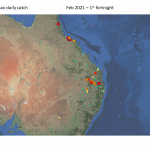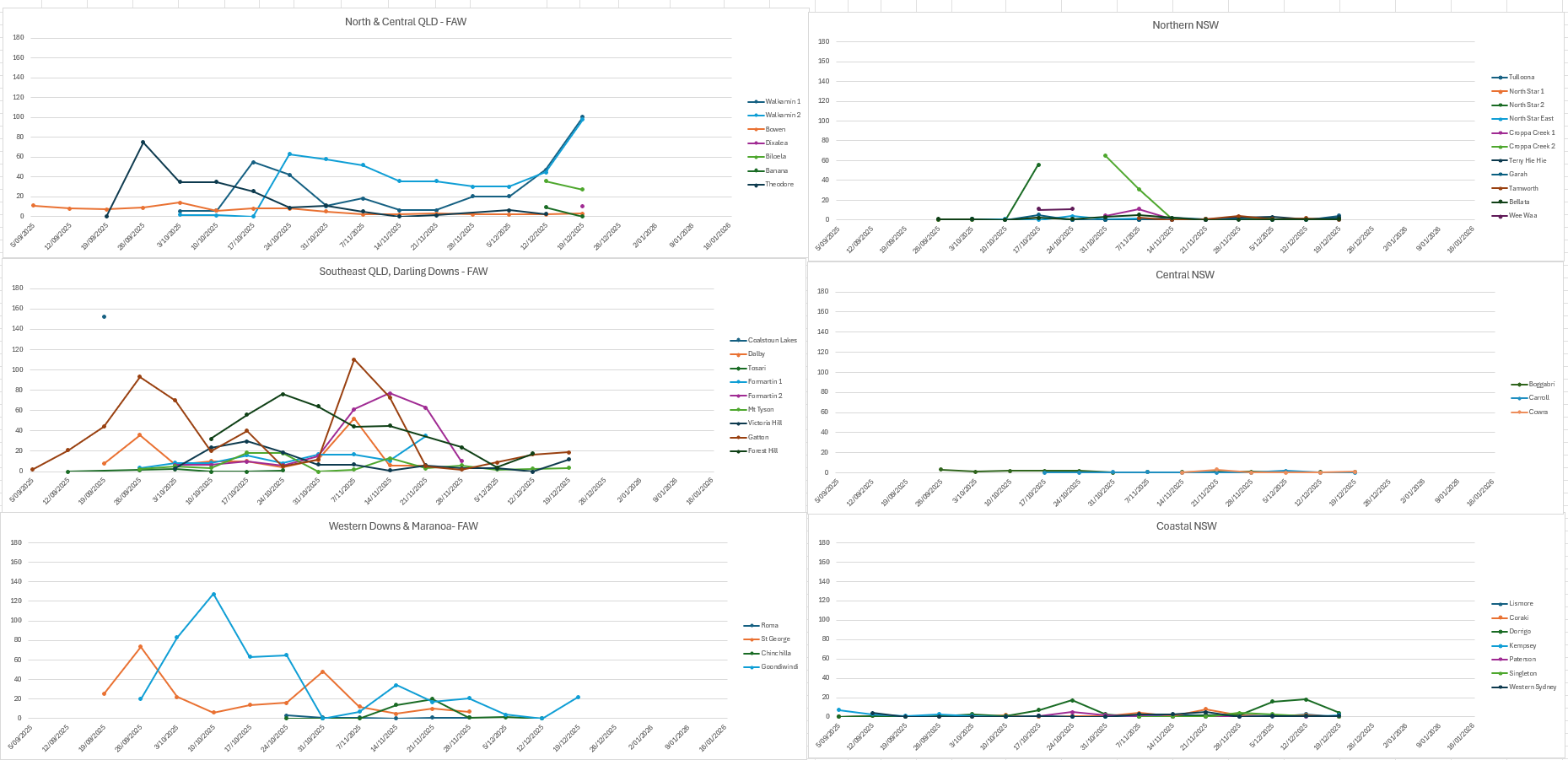Fall armyworm pheromone trap catches
The QLD DPI coordinated Fall armyworm trapping program for 2025 began in mid-August. Results will be added to this page as they become available. The network would not be possible without the help of the many growers and consultants who donate their time to running them. We would also like to thank NSW DPIRD and NSW LLS for contributing weekly moth numbers from NSW.
Week ending 19/12/25
FAW moth trap numbers by station (click on picture to enlarge)
FAW moth trap numbers by region (click on picture to enlarge)
Historical data for trap catches for fall armyworm (from 2020-2023) is available in the link below
 |
View a dynamic map of trap catches from February 2020 to April 2023. |
Setting up your own traps
Setting up your own pheromone trap(s) to monitor fall armyworm is relatively simple. For more information on suppliers and assembly visit the Beatsheet’s Pheromone traps page.
Using the trap data
It is important to note that the primary function of pheromone traps is not to provide definitive counts, but to act as an ‘early warning’ for potential egg lays of FAW. In-crop sampling is required to accurately assess the presence of eggs and larvae.
A prediction can be generated of when larvae may be present in the field by using DARABUG, a model that provides a convenient and readily available means of predicting development times using insect models. Gridded climatic data of daily temperatures is used to generate estimates of the dates of occurrence for each stage throughout the whole life-cycle of an insect.
Insecticide resistance has been a feature of FAW infestations with almost complete failure of all options in Brazil causing significant management issues. When managing FAW, consideration of both potential resistance issues in this pest, and how FAW management will impact on resistance development in Helicoverpa armigera and other species will be necessary.
More information on FAW generally is available on the FAW page



